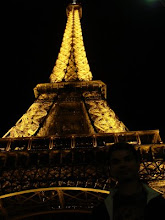‘Big Bang’ postponed to 2009
Wednesday, October 8, 2008
Unblock your ears: ‘Big Bang’ postponed to 2009
Optimists and devotees of science must, along with pessimists dreading – or eagerly anticipating – the destruction of the universe, wait a bit longer. The ‘Big Bang’ experiment involving the Large Hadron Collider (LHC) has been postponed to spring 2009.
According to a September 20 2008 statement on the LHC website, “during commissioning (without beam) of the final LHC sector (sector 3-4) at high current for operation at 5 TeV, an incident occurred at mid-day on Friday 19 September resulting in a large helium leak into the tunnel”.
“Preliminary investigations indicate that the most likely cause of the problem was a faulty electrical connection between two magnets, which probably melted at high current leading to mechanical failure. CERN ’s strict safety regulations ensured that at no time was there any risk to people,” the statement said.
A full investigation was underway, but it was already clear that the sector would have to be warmed up for repairs to take place, it said.
“This implies a minimum of two months down time for LHC operation. For the same fault, not uncommon in a normally conducting machine, the repair time would be a matter of days.”
Further details would be made available as soon as they were known, the statement said.
News agency reports quoted the Director-General of CERN, the European Organization for Nuclear Research, Robert Aymar as saying that the incident was a psychological blow after a successful start of the LHC following years of painstaking preparation by teams of scientists.
“I have no doubt that we will overcome this setback with the same degree of rigor and application,” Aymar said in a statement.
CERN spokesperson James Gillies said they would have to wait several weeks before the temperature could be raised from near absolute zero so that they could go inside the equipment to examine the extent of the damage.
“They're going to have to open up and really investigate what went on there,” Gillies said. “So that's going to be two or three weeks before we can put out something that we're sure of.”
“The winter shutdown will go according to schedule, which means that we start up the accelerator complex in the spring months.”
Scientists involved in the experiment in Geneva were were trying to test the Big Bang idea by using the LHC to smash two beams of particles head-on at super-fast speeds, to see what would happen.
As The Sofia Echo’s science correspondent explained the experiment on September 12, the basics behind the LHC are simple to explain and do not differ much from other particle accelerators. The particle accelerator, also called an atom smasher, is a long tube in which magnets direct and accelerate tiny particles to very high speeds.
When the required energy is achieved, those particles are collided inside a special piece of equipment, called a detector. Scientist use this data to make conclusions about the structure of the examined particles. The particle accelerator is the most important tool in the modern particle physics toolbox and there are a number of such devices built in laboratories around the world. CERN’s is now the largest.
What is impressive about the LHC, in addition to its sheer size and power, is its component parts. The accelerator itself consists of a 27km-long circular tunnel, built 100m underground, in which are installed the lines and equipment needed for experiments.
What the LHC will do is accelerate protons, one of the two main components of the atomic nuclei, into two beams that circulate the accelerator until they nearly attain light speed.
At this point, each of the protons travels through the entire 27km line 11 000 times a second.
One of the most powerful superconductor magnets helps focus and confine the two beams. The entire installation has liquid helium (-271 degrees Celsius) circulating inside for cooling purposes.
Then the two beams are collided inside one of the four detectors built around the line, which can distinguish and plot the trajectories of the particles released from the collision. What will happen from there is a mystery for now.
Some suggest that this will generate an Earth-destroying black hole, though that is clearly not the goal of the project. Instead, scientists want to simulate the conditions of the Big Bang – the point at which our universe was thought to be created.
When this is done, the detectors will provide scientists with data that can answer important questions about the nature of the universe. And one of the answers they are eager to get is: Does the Higgs boson exist?
The Higgs boson is a theoretical, at this point, particle responsible for the transition between energy and matter. It is so important for our modern perception of the universe that it has even been christened with a divine nickname – the God particle. If the experiments at the LHC prove its existence, it would be the first experimental evidence ever and scientists would know how the energy from the Big Bang formed matter, and us.












0 comments:
Post a Comment